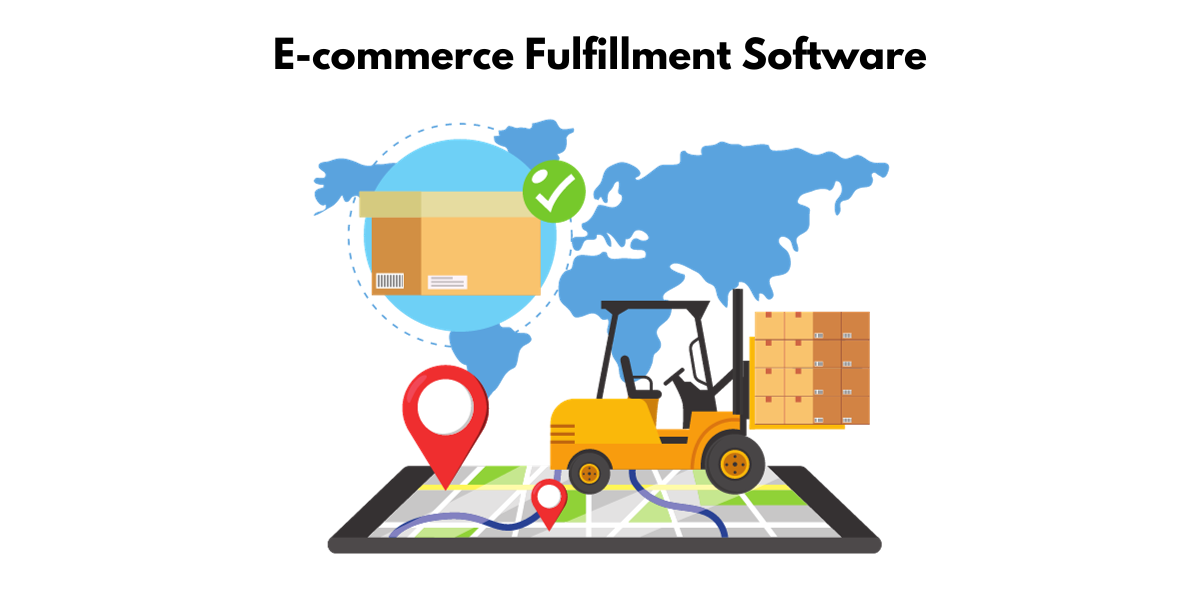E-commerce Shipping Solutions: The Best Shipping Software for Fulfillment
Introduction to E-commerce Shipping Solutions
What is ecommerce shipping?
E-commerce shipping is an intricate process of transporting online purchased goods from the seller to the customer. This is a critical aspect of any e-commerce company’s operations. Specifically, an e-commerce store’s shipping service includes phases such as receiving and processing e-commerce shipping orders, through seamless e-commerce fulfillment solutions.
Following this, the purchased items are picked and packed at a warehouse. What’s more, the meticulous procedure continues with printing shipping labels for your e-commerce store’s shipments and doesn’t conclude till the package lands at the buyer’s doorstep through streamlined e-commerce shipping methods.
Even managing returns falls under this broad umbrella. If you enjoy efficiency and precision, then you’ll be enthralled with this in-depth process which forms the backbone of a proficient e-commerce store’s shipping method.

The significance of efficient shipping solutions for e-commerce providers
For e-commerce providers, efficient shipping is not a choice, it’s a necessity. Navigating e-commerce shipping logistics is essential and influences not just the transport management, but the entire customer experience. When executed flawlessly, strategies like verifying order data and utilizing fulfillment technology contribute to a sturdy e-commerce brand reputation and business growth.
However, it’s crucial to comprehend, a flawed shipping strategy or a faulty fulfillment method could negatively impact your ratings. Managing the intricate threads of fulfillment service and the complexities of a fulfillment warehouse in e-commerce may appear daunting initially, yet we’re here to provide insight and guidance. Let’s take a deeper dive into this fruitful world of fulfillment centers and shipping solutions
Navigating the World of E-commerce Shipping Platforms and Software
Understanding what an e-commerce shipping platform and software does
An e-commerce shipping platform bridges the gap between you and your customers. How’s that? By managing everything from inventory control to web services such as carrier selection, and from automating order data processing to delivery notification. It’s like your personal e-commerce fulfillment superhero, swooping in to save the day when orders start piling up.
With ecommerce shipping software platforms like Shippo, BigCommerce, and WooCommerce that connect your web store with carriers like USPS and Canada Post, shipping becomes automated, making use of systematized data and transforming the process into smooth sailing. These platforms utilize shipping APIs to directly integrate shipping functionality into your online store, not only streamlining the checkout but also the order fulfillment process. Absolutely!

Aspects to consider while choosing your shipping software
Keep these aspects in mind when selecting your shipping software.
- Start by acquainting yourself with the eCommerce shipping guide to grasp the shipping strategy, product packaging, and popular carriers.
- Determine the software’s capacity to offer inventory management, track orders, facilitate insurance procedures, and adopt delivery options for eCommerce integrations – a crucial aspect of being an efficient supplier.
- Consider its operational regions – for example, whether Shipping Rate ShipStation suits your delivery destination requirements. Your next step involves identifying the critical features you need. Is a shipping rates calculator provided? This tool helps calculate costs based on the weight, dimensions, source, and destination of a parcel, making it key for effective handling of shipments. Evaluating its ease of use, software discounts, and quality of customer support is equally essential.
- Also, give relevance to specialized features: companies like EasyPost and Fast-Pack provide an address validation API that corrects postal codes, and missing suite numbers and ensures deliverability- a great fulfillment partner for both inventory management and pickups. Remember these checkpoints as your guiding stars for a seamless business voyage!

Mastering the Art of E-commerce Shipping Strategy
Balancing between real-time carrier rates and flat-rate shipping
Choosing between real-time carrier rates and flat-rate shipping can feel like a juggler’s act! With considerations such as freight shipping, import duties, and even taxes coming into the picture, managing ecommerce shipping rate options for global and local dispatches could be a challenge. For products of similar size and weight, flat-rate shipping, perhaps even with shipping discounts, is a reliable method. Real-time carrier rates, acting much like your secret weapon when dealing with diverse freight, are especially advantageous when your shipping destination varies, perfectly fitting for specific, diverse product lines. Hence, striking a balance between these two, along with managing potential duties, and taxes, could unlock carrier discounts—a sweet spot for successful postage. Are you ready to juggle these options efficiently?
Offering free shipping – When and How?
Ever thought about offering free shipping? Absolutely, it’s a magnet for customers in e-commerce marketplaces, especially the 73% of shoppers eager for fast and affordable deliveries! But the question is, when and how to implement it? Why not introduce the COD option? This would allow your uncertain online shoppers to feel more comfortable with their purchases.
Before you dive in, take a close look at your e-commerce shipping costs – you can use shipping rate calculators available on your retailer mobile app. If your margins are high, feel free to offer it anytime. For tighter margins, consider introducing a minimum order requirement. Loyalty programs or targeted promotions can also serve as a lifeline.
Consider integrating e-commerce orders via platforms like the AfterShip mobile app or ShipWell, offering you advanced visibility of your supply chain. Such tools not only provide end-to-end order tracking but also let you compare shipping rates for affordability.
With these insights in your arsenal, you’re well-equipped to rule the e-commerce world, ensuring considerable savings – and thereby enhancing the customer’s shopping experience. Ready to enter the battlefield of surging eCommerce sales?
Opting for Green Shipping Practices in E-commerce
Reduce, Reuse, Recycle – Going for eco-friendly packaging
Going green is more than a trend, it’s our responsibility! Your e-commerce business can hop on board too. How? By reducing, reusing, and recycling. Opt for biodegradable or recyclable packaging materials. Consider compostable mailers or a reuse program. Not only will the earth thank you, but your eco-conscious customers will too! So why not start painting your business green today?

Selecting energy-efficient shipping methods
Choosing energy-efficient shipping methods is like hitting two birds with one stone. You reduce your carbon footprint and appeal to an eco-conscious audience! Consider options like ground shipping over air, or consolidate shipments to reduce trips. Even better? Partner with carriers who have green initiatives. A step towards greener shipping is a giant leap for mankind and your business! Ready for this eco-adventure?
Top Must-Have Ecommerce Shipping Software in 2023
Reviews and comparison of each listed product
Giving the right tools a spin can rev up the efficiency of your shipping operations. For example, if you’re using an e-commerce platform like Shopify, you can leverage its real-time e-commerce shipping integrations, manage your customer data, and make complex shipping processes such as split shipments and maintaining store inventory a breeze. In the scheme of sales support tools, we’re preparing an in-depth look into the top ten e-commerce shipping software solutions like ShipBob that offer robust API integrations. Our strategic review will seamlessly integrate crucial features like dashboard analytics and overviews of e-commerce shipping options, underpinned by countless hours of research. From detailing features that include mastering shipping workflows, splitting and combining shipments, to managing store inventory and downloading orders from stores, to pricing, we’ve got you covered. Hang tight; we’re about to dive right into the world of advanced e-commerce shipping!
Differences, pros, and cons of using different software
Each shipping software serves a different blend of needs. To help you make an educated selection, we’ll uncover the nuanced differences, pros, and cons of acclaimed platforms such as ShipBob, ShipStation, and ShippingEasy, as well as proprietary platforms like Shopify shipping.
Notably, Shopify shipping gives businesses in North America access to pre-negotiated shipping rates with all top shipping carriers—USPS, DHL Express, and Canada Post, thus saving you from additional visits to the post office.
Similarly, we’ll touch on useful integrations with various marketplaces like eBay, and Magento alongside traditional ones like the Walmart Marketplace.
Certain software, like ShipBob and Shopify, easily sync with your online store, presenting real-time information on order status, sending branded emails, and assigning tracking numbers to orders for streamlined retail fulfillment.
Others, drawing in multiple vendors, such as ShippingEasy, lure you in with compelling pricing and user-friendly interfaces. Thanks to this surge in e-commerce integrations, you can efficiently manage all orders, even from different selling channels, from a single dashboard as with ShipStation. Honing in on these details will help you navigate the software landscape like a pro!

Minimizing Shipping Costs Without Compromising Quality
Optimizing packaging weight and size
Remember, every inch and ounce counts when it comes to shipping. In the realm of eCommerce shipping methods, dim weight—a vital factor in shipping rate calculation, becomes a crucial player for cost optimization in bulk orders. Each inch and ounce truly matters.
Keen on optimizing the weight and size of your packaging? You’re in for good news! Reducing your box size and decreasing the weight can tangibly trim down your shipping costs. Embrace the mantra “dim weight savvy and light equals savings!”
Choosing the best strategy for calculating shipping rates
Selecting the best strategy to calculate shipping rates can be a game-changer for your e-commerce business. This process could be made smoother with the aid of a shipping rates calculator, much like those offered by prominent shipping services like USPS, Canada Post, UK Royal Mail, Australia Post, UPS, and FedEx.
At this juncture, it’s worth mentioning the role of a tech-enabled e-commerce fulfillment solution like ShipBob which seamlessly handles orders from your online store. Real-time rates, flat rates, table rates—the choices can be quite intricate with each shipping method holding significant pros and cons. The best choice primarily depends on your business model, product type, and customer preferences. Seems like a dizzying task? Absolutely.
Thankfully, we’re here to help you navigate through these complexities with an enhanced focus on services like ShipBob’s e-commerce fulfillment solution.

FAQs:
What is the best shipping method for eCommerce?
Debating over the best shipping method for eCommerce? Consideration of eCommerce shipping methods can be crucial for your business’s profitability. It all boils down to who you’re shipping to, the nature of the goods you’re shipping, and your budget. UPS, DHL, FedEx, and USPS are among the various shipping carriers that offer unique strengths. Perhaps you’re aiming for cost-effectiveness? Speed? Reliability? Our advice – weigh these factors against the different types of eCommerce shipping methods. Choose what aligns best with your business goals for an optimized, tailor-made fit. Be sure to look into aspects like packaging, insurance, and tracking. A perfect fit awaits!
Does fulfillment include shipping?
Curious if fulfillment includes shipping? Indeed, it does! The concept of fulfillment surrounds the entire process: from the moment an order is placed, through its transit in a fulfillment center or warehouse, to when it reaches your customer’s doorstep – that’s right, shipping is part of the fulfillment service. In fact, it’s the crucial transit of the package from the fulfillment warehouse to the customer.
Selecting a strategic fulfillment partner, such as ShipBob or Deliverr, can even offer you better shipping rates and overall services, enhancing your e-commerce efficiency and customer satisfaction. So, is the eCommerce puzzle solved with understanding the pivotal role of a fulfillment center? You can confidently answer, yes!
What’s the best strategy for calculating shipping rates?
Cracking the code for the best strategy to calculate shipping rates? Let’s explore the various e-commerce shipping methods. It’s not just about calculations—it’s a mix of evaluation and understanding of your specific business needs. Perhaps you’re pondering over a per-item, zone-based approach—a great choice for uniform products. But what if you have heavy or variable-size items? Carrier-based rates might just be your winning ticket. Remember, every e-commerce business is unique, and so is its perfect shipping strategy, it takes a versatile e-commerce fulfillment solution. Are you ready to figure out what works best for your online store? Let the journey begin!
- E-commerce Shipping Solutions: The Best Shipping Software for Fulfillment - October 12, 2023
- 10 Benefits of Having Effective Metadata Management - April 2, 2022






